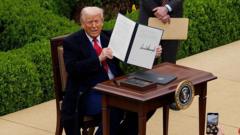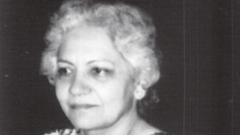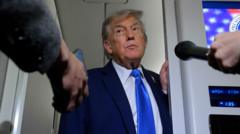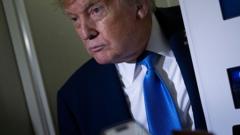Over 2,000 recently unsealed documents regarding President John F. Kennedy's assassination expand on CIA involvement and intelligence techniques, yet they do not provide the definitive answers many scholars and conspiracy theorists seek, continuing to fuel speculation about the events of 1963.
Insights and Inquiries: Latest JFK Files Reveal New Details but Leave Old Questions Unanswered
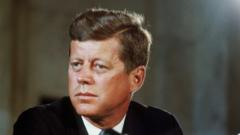
Insights and Inquiries: Latest JFK Files Reveal New Details but Leave Old Questions Unanswered
Newly released documents on the JFK assassination unveil insights into CIA surveillance and presidential tensions, but they still fail to resolve lingering doubts about the event.
Newly released documents concerning the assassination of President John F. Kennedy have generated significant interest among historians, researchers, and conspiracy theorists alike. These more than 2,000 documents, made available by the Trump administration, bring both clarity and complexity to the ongoing discussions surrounding JFK's death, which occurred more than 60 years ago in Dallas. While the latest release aims to improve transparency—offering more complete versions of previously redacted materials—the absence of definitive answers keeps many questions alive.
Experts heralded this release as a significant advance towards transparency since many documents had previously been withheld or partially blacked out due to national security concerns. Among the notable findings is an increased understanding of the CIA's surveillance operations regarding Lee Harvey Oswald, who acted as the primary suspect in the assassination. Former Washington Post reporter Jefferson Morley described the release as one of the most exciting developments in JFK record disclosure in recent decades.
Despite the unveiling of additional materials adding nuances to the narrative surrounding Oswald, including his interactions in Mexico City months before the assassination, there were no major revelations that would drastically reshape existing theories or historical accounts. Philip Shenon, who has extensively researched the case, argued that some documents further demonstrate Oswald's vocal intentions towards harming Kennedy. However, no fresh bombshells emerged to support the multitude of conspiracy theories that have surged over the years.
Significant insights into the operational dynamics between Kennedy and intelligence agencies also surfaced, revealing tension between the president and the CIA regarding foreign policy influence, although these revelations do not directly relate to the assassination. For instance, a memo by Kennedy aide Arthur Schlesinger criticized CIA overreach within U.S. embassies. Alongside these discussions, the release includes documents detailing advanced surveillance techniques used by the CIA, adding layers to our understanding of Cold War espionage.
While many people are circulating bold claims suggesting these documents uncover new conspiracies, automatically discrediting them may overlook previous discussions that have long circulated among scholars. Claims surrounding Gary Underhill, who theorized about CIA involvement in the assassination, were separated from substantive evidence and have resurfaced with the new document release, highlighting how misinformation often shapes narrative interpretations.
A 1992 law mandated that all documents related to JFK's assassination be made public within 25 years, though national security exceptions allowed some records to remain sealed. President Trump previously stated intentions to release everything in full, and President Biden subsequently also authorized batch releases. While the latest files represent progress, experts suggest additional documents are yet to be unveiled from other agencies such as the CIA and FBI. The consensus remains that even ongoing document releases will not quell intrigue or debate about the circumstances surrounding JFK's tragic death, indicating an enduring quest for closure on this pivotal moment in American history.


